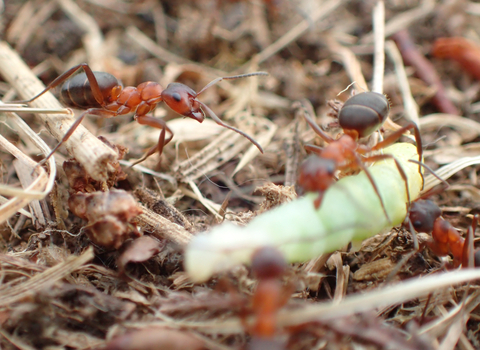
Narrow-headed ants ©John Walters

Narrow-headed ants ©John Walters
Narrow-headed ant
A very rare ant, once found on heathland across southern England but now restricted to Scotland and Devon. It constructs distinctive thatched nests in open areas at the edges of scrub, and forages for aphid honeydew on nearby plants.
Enw gwyddonol
Formica exsectaPryd i'w gweld
May to OctoberSpecies information
Ystadegau
Length: up to 10mm; queens ~12mmPriority Species under the UK Post-2010 Biodiversity Framework (NERC Act Section 41 Species of Principal Importance). UK Red Data Book. Scottish Biodiversity List
